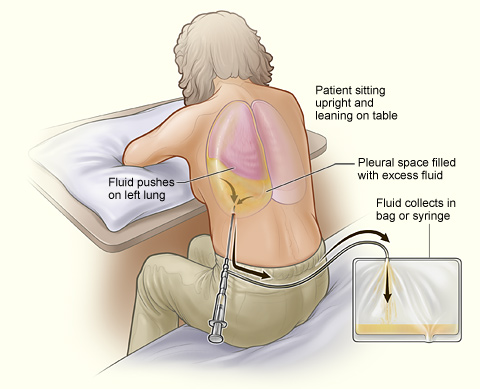blood lab
1/46
Earn XP
Description and Tags
Name | Mastery | Learn | Test | Matching | Spaced |
|---|
No study sessions yet.
47 Terms

What is the purpose of a Complete Blood Count (CBC)?
To provide information about blood cells, including WBC, RBC, hemoglobin, hematocrit, and platelets.
What is the normal range for WBC count?
4.0-11 ×10³/µL.
What does a high RBC count indicate?
Polycythemia, caused by low oxygen, dehydration, or kidney disease.
What is the normal range for hemoglobin in males?
13-18 g/dL.
What is the normal range for hematocrit in females?
37-40%.
What does a low WBC count (leukopenia) indicate?
Bone marrow failure, cytotoxic substances, autoimmune diseases, or liver/spleen disease.
What is the normal range for platelets?
150-400 ×10³/µL.
What does a high platelet count (thrombocytosis) indicate?
Chronic myeloid leukemia.
What does a low platelet count (thrombocytopenia) indicate?
Aplastic anemia or chemotherapy.
What is the normal range for MCV?
80-98 fL.
What is the normal range for MCH?
27-34 pg.
What is the normal range for MCHC?
32-36 g/dL.
What is Packed Cell Volume (PCV)?
The ratio of packed blood cell volume to plasma.
What apparatus is used to determine PCV?
Microhematocrit centrifuge machine.
What is the normal PCV range for males?
40-45%.
What is the normal PCV range for females?
37-40%.
What does a high hematocrit indicate?
Dehydration, polycythemia vera, or low oxygen tension.
What does a low hematocrit indicate?
Anemia, blood loss, bone marrow failure, hemolysis, or leukemia.
How is PCV calculated?
PCV = (RBC volume / Total blood volume) × 100.
What is the formula for Mean Corpuscular Volume (MCV)?
MCV = (PCV × 10) / RBC count.
What is the formula for Mean Corpuscular Hemoglobin (MCH)?
MCH = (Hemoglobin × 10) / RBC count.
What is the formula for Mean Corpuscular Hemoglobin Concentration (MCHC)?
MCHC = (Hemoglobin × 100) / PCV.
What type of anemia is associated with low MCV and low MCH?
Microcytic hypochromic anemia.
What is the common cause of microcytic hypochromic anemia?
Iron deficiency.
What type of anemia is associated with high MCV?
Macrocytic megaloblastic anemia.
What is the common cause of macrocytic megaloblastic anemia?
Vitamin B12 or folic acid deficiency.
What apparatus is used to estimate hemoglobin?
Sahli’s hemoglobinometer.
What is the principle of Sahli’s method for hemoglobin estimation?
Hemoglobin is converted to acid hematin (brown) using N/10 HCl, and color is matched against a standard.
What are the advantages of Sahli’s method?
Easy, quick, inexpensive, bedside procedure, no technical expertise required.
What are the disadvantages of Sahli’s method?
Less accurate, slow color development, color fading over time.
What is the normal hemoglobin range for adult males?
13-18 g/dL.
What is the normal hemoglobin range for adult females?
11.5-16.5 g/dL.
What is Erythrocyte Sedimentation Rate (ESR)?
The rate at which RBCs sediment in 1 hour.
What is the clinical significance of ESR?
A nonspecific inflammation marker used to monitor disease activity and treatment response.
What is the normal ESR range for males?
3-5 mm in 1st hour, 7-15 mm in 2nd hour.
What is the normal ESR range for females?
Slightly higher than males.
What factors cause a moderately elevated ESR?
Infections, inflammation, anemia, malignancies, pregnancy, and aging.
What conditions cause a very high ESR?
Multiple myeloma, polymyalgia rheumatica, temporal arteritis.
What is the role of fibrinogen in ESR?
High fibrinogen causes RBCs to stick together (rouleaux), increasing sedimentation rate.
What apparatus is used to measure ESR?
Westergren’s sedimentation apparatus.
What is the procedure for Westergren’s ESR method?
Blood is placed in a Westergren tube, left upright, and plasma column height is measured after 1 and 2 hours.
What is C-reactive protein (CRP)?
An acute-phase protein produced by the liver during inflammation.
Why is CRP preferred over ESR?
CRP rises faster in response to inflammation or infection.
What is the normal range for neutrophils?
40-74%.
What is the normal range for lymphocytes?
14-46%.
What is the normal range for monocytes?
4-13%.
What is the normal range for eosinophils?
0-7%.